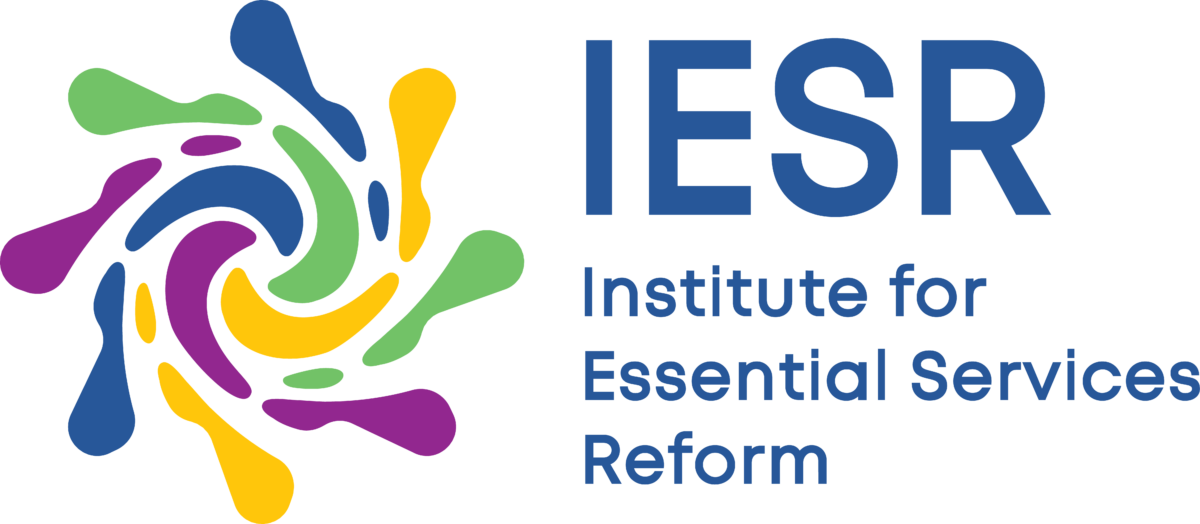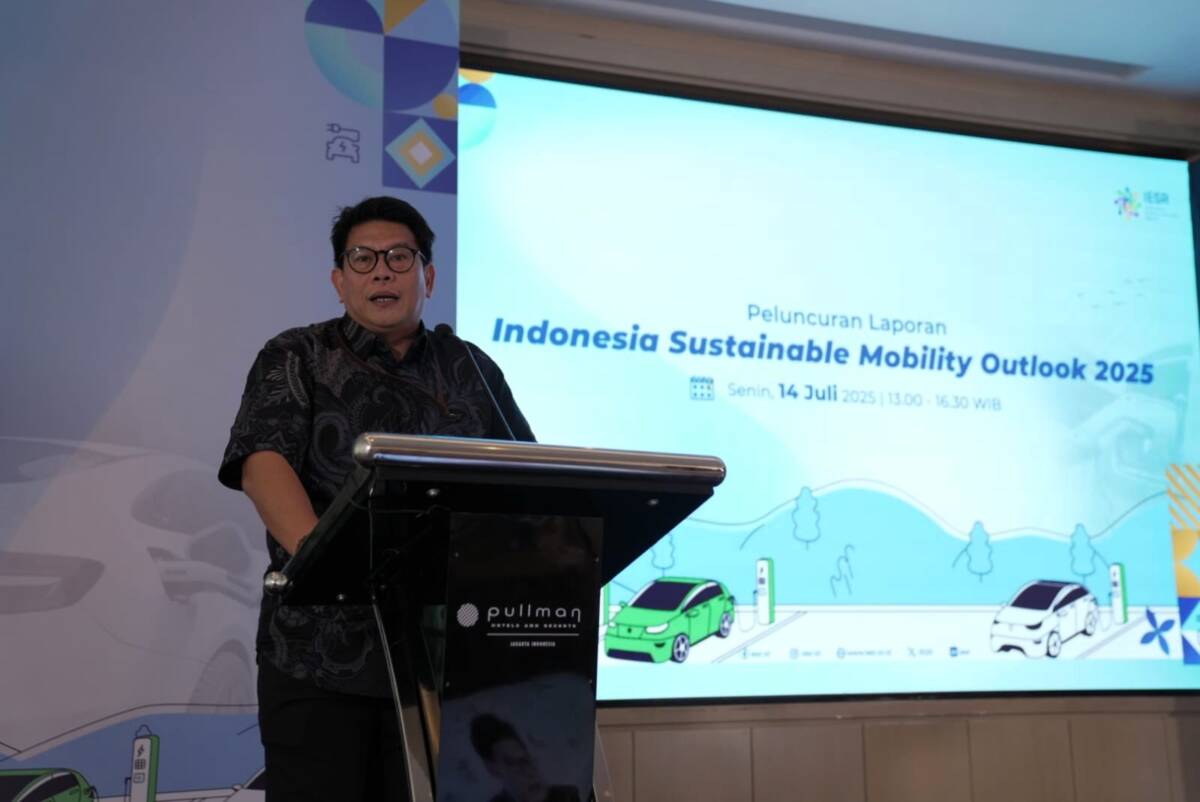Jakarta, July 14, 2025 – The Prabowo-Gibran government is being urged to develop a low-emission and sustainable mobility strategy to realize its goal of becoming a developed nation by 2045 and achieving net-zero emissions (NZE) by 2060 or earlier. Without coordinated policies and planning, Indonesia is certain to face a surge in GHG emissions and increased fuel consumption and imports, as well as widening social inequality in access to mobility.
The Institute for Essential Services Reform (IESR), supported by ViriyaENB and the Drive Electric Campaign, launched the Indonesia Sustainable Mobility Outlook (ISMO) 2025 report on Monday (14/7). This report proposes an integrated sustainable mobility strategy based on three main approaches: Avoid – Shift – Improve (ASI), reducing mobility demand (Avoid), shifting to low-emission transportation modes (Shift), and improving technology and efficiency (Improve). The integrated approach is considered capable of reducing transportation sector emissions by up to 76 percent, from 561 million tons of carbon dioxide equivalent to 117 million tons of carbon dioxide equivalent by 2060. It should be noted that the remaining 24 percent of emissions come from freight transportation, for which no specific interventions were identified in this study. The Shift strategy, by increasing the share of public transportation to 40 percent, contributes the most, with a potential emission reduction of 101 million tons. Meanwhile, the Improve strategy, through the adoption of electric vehicles, with up to 66 million cars and 143 million electric motorcycles, is projected to reduce emissions by up to 210 million tons by the same year.
Fabby Tumiwa, Chief Executive Officer (CEO) of IESR, explained the importance of implementing the Avoid-Shift-Improve (ASI) approach consistently and simultaneously. Fabby explained that by 2024, emissions from the transportation sector contributed 202 million tons of carbon dioxide equivalent, or approximately 25 percent of total national energy sector emissions. Without serious action, these emissions could nearly triple by 2060.
“Our modeling results indicate that per capita travel distances are projected to double by 2050. Without a transportation sector decarbonization strategy, this surge will exacerbate congestion, fuel imports, and air pollution, exacerbating the health crisis and fiscal burden,” said Fabby.
When it’s not addressed immediately, President Prabowo will have to abandon his goal of 8 percent economic growth by the end of 2029 and bury his dream of a Golden Indonesia 2045 due to the increasing economic costs of the current transportation system. Therefore, decarbonizing the transportation sector is urgent for high and sustainable economic growth.
The ISMO 2025 report identified that 80 percent of emissions from the transportation sector come from the road transportation subsector. This is driven by the high mobility of private passenger cars, freight transport, and motorcycles. As a result, emissions from road transportation are dominated by cars (35%), followed by freight transport (30%), motorcycles (28%), and buses (6%).
Ilham R F Surya, Environmental Policy Analyst at IESR, stated that based on a 2023 survey of road users by the Central Statistics Agency (BPS), the majority of motorcycle users chose this mode of transportation because it was considered faster and more reliable. Meanwhile, 42 percent of car users chose this mode because they prioritized comfort. Another study also showed that when a person’s income increases above 4 million rupiah per month, motorcycle and public transportation use actually decreases, while private car use increases.
“In large cities like Bandung, Jakarta, and Yogyakarta, public transportation is still not an attractive option. Commuters or those who regularly travel to work perceive limited access, uncertain travel times, and delays as factors that discourage them from using public transportation,” Ilham added.
IESR emphasizes the implementation of an inclusive and equitable Avoid–Shift–Improve (ASI) strategy to reduce emissions in the transportation sector. The Avoid approach is implemented through an integrated urban development strategy with public transportation (Transit Oriented Development, TOD), thereby shortening travel distances and times. In addition, travel management (Traffic Demand Management (TDM) is implemented through a combination of car-free days, odd-even traffic systems, congestion pricing, and work-from-home policies.
Meanwhile, the implementation of Shift is to encourage the expansion and improvement of public transportation services, such as the TransJakarta integrated highway bus. This effort is also strengthened through a Buy The Service (BTS) scheme that guarantees minimum service standards and affordable fares, and has so far shown positive results. The government also needs to expand transportation infrastructure outside of Java to reduce access inequality, such as by expanding the integrated rail and bus networks in other cities.
In the Improve approach, strategies include encouraging the adoption of electric vehicles through fiscal and non-fiscal incentives, as well as ensuring long-term policy certainty. Diversification of electric vehicle markets and manufacturers is also crucial to increase competition and lower prices. Furthermore, improving fuel standards, such as adopting the EURO IV standard, is necessary to reduce emissions from conventional vehicles.
“Simultaneous implementation of the Avoid-Shift-Improve (ASI) approach and strategy will have positive impacts, such as reducing private vehicle use, encouraging public transportation, reducing fossil fuel consumption, and accelerating the adoption of low-emission technologies,” said Faris Adnan Padhilah, Coordinator of Energy Demand Management Research, IESR.
Faris stated that this strategy has the potential to reduce peak emissions in 2030 by 18 percent, from 201 million tons to 164 million tons of carbon dioxide. Its consistent implementation can accelerate the achievement of NZE in the transportation sector by 2060 or sooner.

